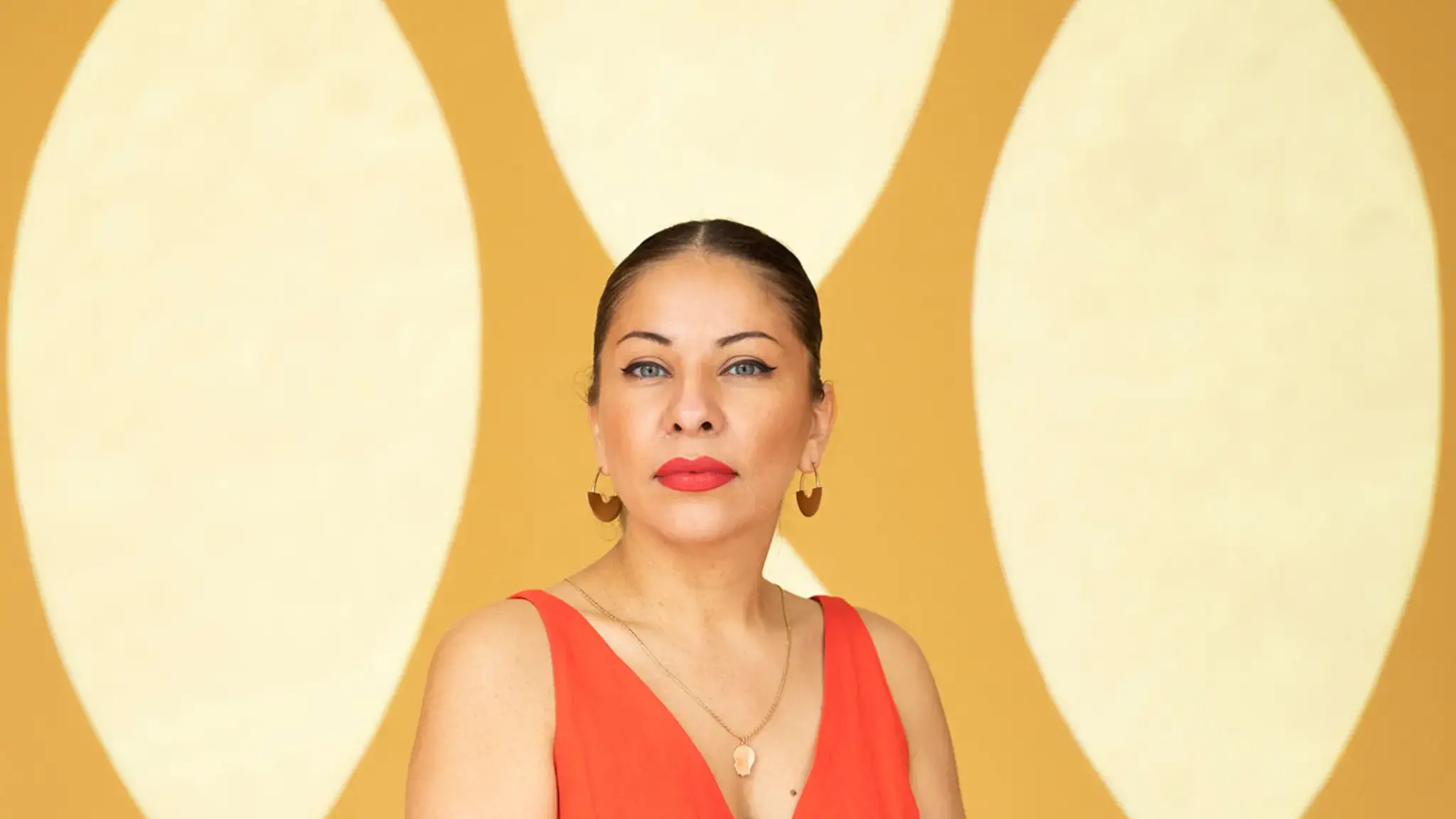Our “Pew Fellow of the Week” series focuses on the artistic lives of our Pew Fellows: their aspirations, influences, and creative challenges.
We asked Michelle Angela Ortiz (2018) how she thinks artists can effect social change and about her legacy as an artist working in public spaces where, she says, “longevity of my artworks is not guaranteed.” The visual artist maintains a practice that examines issues of immigration, inequality, and human rights. She has designed and created over 50 large-scale public artworks nationally and internationally, including in Costa Rica, Ecuador, Fiji, Mexico, Argentina, Spain, Venezuela, and Honduras.
How did you become an artist? Is there a particular experience that drove you to this choice?
As a child of immigrants, the pressures of being successful and financially secure are very present—especially when every action and decision is weighed upon the sacrifices of your parents. At age three, I would leave drawings for my mother on the dining room table as gifts when she would return home at 2 a.m. from one of her two jobs. My father collected scrap papers from the offices of the building he cleaned in Center City; those papers became my first sketchbooks. I am fortunate to have two beautiful individuals who continue to believe in and support my work as an artist. My earliest memories of their support, in the beginning of my creative journey, were crucial—because I saw becoming an artist as a reality.
Growing up on the 9th Street Market [in Philadelphia], seeing how vendors presented their produce, how my family decorated our altars at home, how we gathered and danced to my father’s boleros; these experiences are part of my foundation, combined with my artistic training. These experiences continue to influence my core values as an artist.
Your artistic practice is a socially engaged one. How do you think artists can effect social change?
I come to my work believing that we all carry light, and our actions either make us shine brighter or dim our potential to create change. I see my work as an artist as cultural currency that I use to invest back into the communities I am connected to and to reflect what we contribute to our society. The current attacks on families seeking asylum at the border, or on children and parents detained here in Pennsylvania, are part of a larger history of how communities of color have been targeted through systematic oppression in our country. I believe that before entering any community, it is essential that artists are aware of their own biases, privilege, and power. I believe that it is important for artists to recognize the existing power, resources, and voices of the community. Within this understanding, the artist and community can collectively work together towards advocating and taking action on the change they want to see. In a world where there is so much indifference, the creative process becomes a way to remind us of our connection to one another.
What quality do you most admire in another artist?
The qualities that I most admire in other artists are humility, skill, hustle, generosity, honesty, and dedication.
Tell us about one of your works that had special significance to you.
Every work has a special meaning and offers learning moments. I would say that a stand-out work was an installation that I created at the Immigration and Customs Enforcement (ICE) building through my “Familias Separadas” project. The ICE building, located on 16th and Callowhill Streets in Philadelphia, is the most aggressive in the country [as reported by The Philadelphia Inquirer and ProPublica]. It is the first step of deportation and where family members are first detained. On Monday, October 12, 2015, on “Columbus Day,” I organized over 30 volunteers and undocumented families from [the community-led immigrant organization] Juntos to place the words of Ana, an undocumented mother, in front of the ICE building. Together we installed the 90-foot-long words “WE ARE HUMAN BEINGS, RISKING OUR LIVES, FOR OUR FAMILIES AND OUR FUTURE.” These words were placed at the exit point where the detained family members are transported to other prisons to process their deportation. A high point in my career was this powerful moment when we gathered as ICE agents looked down at us; we stood together in front of this building that represents fear and together in solidarity became fearless. It was a moment that reinforced my mantra, which is to create work that is both poetic and powerful.
Do you think about your legacy, and if so, how does your thinking about it affect your practice?
My artworks are like artifacts that record a place and time and contribute, in part, to my legacy. I’ve become more aware of preserving and documenting my works. I am making choices on what I create and what will be temporary or permanent. As an artist working in public spaces, even the longevity of my artworks is not guaranteed. What I see as my lasting legacy are the connections to the communities I have worked with which include local artists, community organizers, mothers, fathers, and youth. Through my interactions, I have witnessed silence broken and moments of healing, and I have seen empathy turn into action. These are experiences that contribute to waves of change—whether small or large—that I hope will live on.









